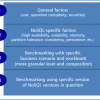Strategic advice to leverage new technologies
Technology is at the heart of nearly every enterprise, enabling new business models and strategies, and serving as the catalyst to industry convergence. Leveraging the right technology can improve business outcomes, providing intelligence and insights that help you make more informed and accurate decisions. From finding patterns in data through data science, to curating relevant insights with data analytics, to the predictive abilities and innumerable applications of AI, to solving challenging business problems with ML, NLP, and knowledge graphs, technology has brought decision-making to a more intelligent level. Keep pace with the technology trends, opportunities, applications, and real-world use cases that will move your organization closer to its transformation and business goals.
Recently Published
Looking at Model Refinement
One of my friends wanted help in growing her business. As a local restaurant owner, she had received many accolades and encouragement to expand. Being a wise (and cautious) leader, she wanted first to see if the compliments she was receiving were warranted and whether her "product" was truly worthy of expansion. She didn't want to trust that her friends and family weren't just being nice. Rather, she wanted to measure the quality of her restaurant.
Cloud Performance Metrics and Benchmarking
For all independent service providers (ISVs) and IT service providers, developing cloud-based services are becoming an essential business model in order to be at par with competitors and to keep infrastructure and operational cost optimal.
The more agile software development becomes mainstream, the more often I run into a typical pattern of management mismatch. It comes in several flavors. A recent client CTO who is responsible for the IT of an online store illustrates one example. “We have just raised an additional budget of 1 million Euros for this year to implement this fantastic feature,” he told me.
















